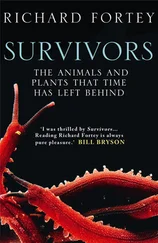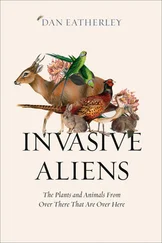Andrew H. Cobb - Herbicides and Plant Physiology
Здесь есть возможность читать онлайн «Andrew H. Cobb - Herbicides and Plant Physiology» — ознакомительный отрывок электронной книги совершенно бесплатно, а после прочтения отрывка купить полную версию. В некоторых случаях можно слушать аудио, скачать через торрент в формате fb2 и присутствует краткое содержание. Жанр: unrecognised, на английском языке. Описание произведения, (предисловие) а так же отзывы посетителей доступны на портале библиотеки ЛибКат.
- Название:Herbicides and Plant Physiology
- Автор:
- Жанр:
- Год:неизвестен
- ISBN:нет данных
- Рейтинг книги:5 / 5. Голосов: 1
-
Избранное:Добавить в избранное
- Отзывы:
-
Ваша оценка:
- 100
- 1
- 2
- 3
- 4
- 5
Herbicides and Plant Physiology: краткое содержание, описание и аннотация
Предлагаем к чтению аннотацию, описание, краткое содержание или предисловие (зависит от того, что написал сам автор книги «Herbicides and Plant Physiology»). Если вы не нашли необходимую информацию о книге — напишите в комментариях, мы постараемся отыскать её.
Discover the latest developments in herbicide and weed biology Herbicides and Plant Physiology,
Arabidopsis
Herbicides and Plant Physiology
Herbicides and Plant Physiology — читать онлайн ознакомительный отрывок
Ниже представлен текст книги, разбитый по страницам. Система сохранения места последней прочитанной страницы, позволяет с удобством читать онлайн бесплатно книгу «Herbicides and Plant Physiology», без необходимости каждый раз заново искать на чём Вы остановились. Поставьте закладку, и сможете в любой момент перейти на страницу, на которой закончили чтение.
Интервал:
Закладка:
Table 1.4 Estimated percentage crop losses owing to weeds, 1988–90 (from Oerke et al ., 1995).
Source: Oerke, E.C., Dehne, H.W., Schonbeck, F. and Weber, A. (eds) (1995) Crop Production and Crop Protection: Estimated Losses in Major Food and Cash Crops . Amsterdam: Elsevier.
| Estimated loss owing to weeds (%) | |
|---|---|
| Africa | 16.5 |
| North America | 11.4 |
| Latin America | 13.4 |
| Asia | 14.2 |
| Europe | 8.3 |
| Former Soviet Union | 13.0 |
| Oceania | 9.6 |
| Average | 13.1 |
Table 1.5 Relative competitive abilities of a number of common weeds found in winter cereals.
Source: Lutman, P.J., Boatman, N.D, Brown V.K. and Marshall, E.J.P. (2003) Weeds: their impact and value in arable ecosystems. In: The Proceedings of the BCPC International Congress: Crop Science and Technology 2003 1, 219–226.
| Weed species | 5% yield loss (plants m −2) | Weed species | 5% yield loss (plants m −2) |
|---|---|---|---|
| Galium aparine | 1.7 | Poa annua | 50.0 |
| Anisantha sterilis | 5.0 | Epilobium spp. | 50.0 |
| Avena fatua | 5.0 | Polygonum aviculare | 50.0 |
| Lolium multiflorum | 8.3 | Sonchus spp. | 50.0 |
| Alopecurus myosuroides | 12.5 | Taraxacum officinale | 50.0 |
| Brassica napus | 12.5 | Fumaria officinalis | 62.5 |
| Sinapis arvensis | 12.5 | Geranium spp. | 62.5 |
| Tripleurospermum inodorum | 12.5 | Lamium purpureum | 62.5 |
| Cirsium spp. | 16.7 | Ranunculus spp. | 62.5 |
| Convolvulus arvensis | 16.7 | Veronica spp. | 62.5 |
| Fallopia convolvulus | 16.7 | Aethusa cynapium | 83.3 |
| Papaver spp. | 16.7 | Senecio vulgaris | 83.3 |
| Chenopodium album | 25.0 | Anagallis arvensis | 100.0 |
| Myosotis arvensis | 25.0 | Allium vineale | 250.0 |
| Persicaria maculosa | 25.0 | Aphanes arvensis | 250.0 |
| Silene vulgaris | 25.0 | Legousia hybrida | 250.0 |
| Stellaria media | 25.0 | Viola arvensis | 250.0 |
Yield loss may also occur in addition to direct competition for resources. Allelopathy is the production of allelopathic chemicals by one plant species that may inhibit (or, in the case of positive allelopathy, stimulate) the growth of other species. Anecdotal evidence of negative allelopathic effects has been reported for a number of weed species, although supporting research is often lacking. Recent findings have been reviewed by Olofdotter and Mallik (2001) and others (see Agronomy Journal vol. 93). Given the ample evidence of allelopathy exhibited by crop species, it is highly likely that many weed species will also display these effects, and that it is only a matter of time before research demonstrating this becomes readily available.
Further examples of yield loss caused by weeds include the effects on non‐plant organisms. One example of this is the presence of dandelion ( Taraxacum officinale ) in fruit orchards. Dandelion flowers are preferentially visited by insect pollinators and so pollination of fruit blossom (and therefore fruit yield) is reduced.
1.4.2 Interference with crop management and handling
Some weeds can make the operation of agricultural machinery more difficult, more costly, or even impossible. The presence of weeds within a crop may necessitate the need for extra cultivations to be introduced. This often leads to crop damage, reduced yields and increased pest and disease occurrence, although in sugar beet crops, where inter‐row cultivation is often carried out and has previously been associated with yield loss, recent findings suggest that careful implementation can result in no loss of root yield or sucrose content (Dexter et al ., 1999; Wilson and Smith, 1999). This is possibly due to the development of tillage equipment that carries out more shallow cultivation and that is more carefully implemented, resulting in less seedling and root damage. Weeds can also affect the processes carried out prior to crop planting. For example, fat hen stems and leaves block the mesh of de‐stoners, which are used prior to potato and other root crop planting. Species with rough, wiry stems that spread close to the ground (e.g. knotgrass, Polygonum aviculare ) or are more erect in growth habit (e.g. fat hen, Chenopodium album ) present major problems for the mechanical harvesting of many crops and can result in damage to machinery (e.g. pea viners) and subsequent harvesting delays. Other species can be troublesome when the crops are harvested by hand, such as the small nettle ( Urtica urens ) in strawberries and field bindweed ( Convolvulus arvensis ) in blackcurrants. The result is that fruit is not harvested and spoils on the plant.
1.4.3 Reduction in crop quality
Competition between crop and weed species can result in spindly leaf crops and deformed root crops which are less attractive to consumers and processors. A crop may have to be rejected if it contains weed seeds, especially when the crop is grown for seed, such as barley and wheat, and if the weed seeds are similar in size and shape to the crop, e.g. wild oats ( Avena fatua ) in cereal crops. Similar problems are encountered in the contamination of oilseed rape seed with seeds of weed species such as cleavers ( Galium aparine ). Where a proportion of the seed is saved for planting in subsequent seasons, this can cause a large increase in weed infestation. Contamination by poisonous seeds, such as darnel ( Lolium temulentum ) and corncockle ( Agrostemma githago ) in flour‐forming cereals is also unacceptable and once led to vastly increased costs of crop cleaning. Such cleaning, however, has meant that these weeds are now probably extinct in agroecosystems in the UK. A further example that still causes major problems is black nightshade fruit ( Solanum nigrum ) in pea crops (Hill, 1977). In this case, the poisonous weed berry is of similar size and shape to the crop and so must be eradicated. Although grazing animals avoid poisonous species in pasture (e.g. common ragwort, Senecio jacobea ), they may be difficult to avoid in hay and silage, and some species, notably the wild onion ( Allium vineale ), can cause unacceptable flavours in milk and meat.
1.4.4 Weeds as reservoirs for pests and diseases
Weeds, as examples of wild plants, form a part of a community of organisms in a given area. Consequently, they are food sources for some animals and are themselves susceptible to many pests and diseases. Because of their close association with crops, they may serve as important reservoirs or carriers of pests and pathogens, as exemplified in Table 1.6. Even where crop infestation does not occur, the presence of disease in weeds may cause problems, as is the case where grass weeds are infected with ergot ( Claviceps purpurea ), causing contamination of harvested grain with highly toxic ergot fragments.
Читать дальшеИнтервал:
Закладка:
Похожие книги на «Herbicides and Plant Physiology»
Представляем Вашему вниманию похожие книги на «Herbicides and Plant Physiology» списком для выбора. Мы отобрали схожую по названию и смыслу литературу в надежде предоставить читателям больше вариантов отыскать новые, интересные, ещё непрочитанные произведения.
Обсуждение, отзывы о книге «Herbicides and Plant Physiology» и просто собственные мнения читателей. Оставьте ваши комментарии, напишите, что Вы думаете о произведении, его смысле или главных героях. Укажите что конкретно понравилось, а что нет, и почему Вы так считаете.











